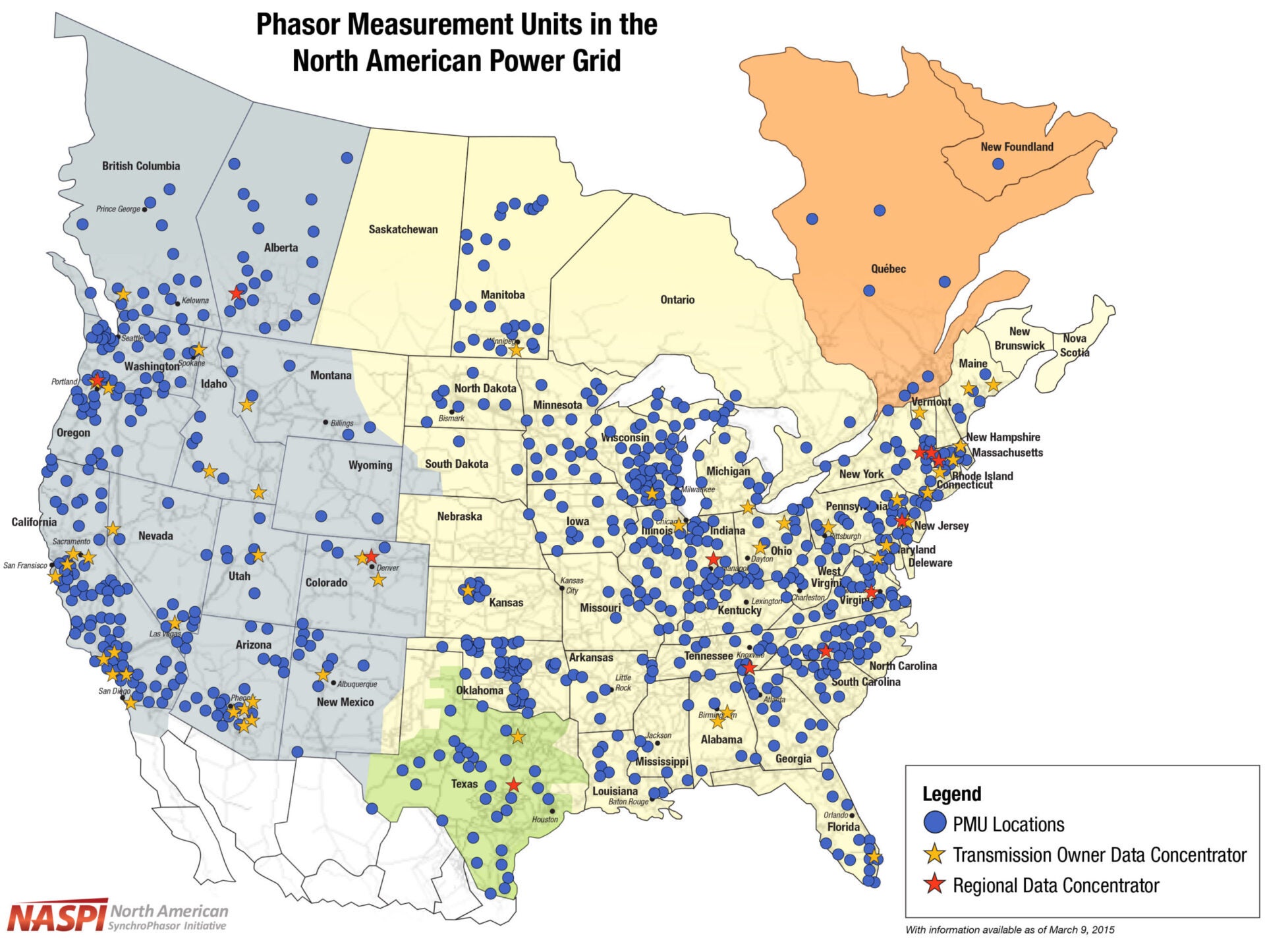
Watching the Grid’s Heartbeat
The electricity grid has similarities to the human body, an interrelated system of muscles and organs (i.e. power generators), arteries (i.e. transmission lines) and veins and capillaries (i.e. distribution lines) all working and pulsing together.
Electrical current on the grid moves cyclically, ideally at a specific frequency, kind of like a heartbeat.
Electric system operators need to monitor the grid’s heartbeat and other factors to maintain grid system health in order to keep the lights on. Even slight deviations from the normal pulse can cause major problems if not quickly detected and corrected.
Until recently, grid operators relied on older monitoring technology that couldn’t keep pace with the fast pulse of the grid. Now, due to a $358 million national effort to deploy new “synchrophasor” technology on the grid, operators can begin monitoring the grid in high resolution.
Traditionally relied upon supervisory control and data acquisition (SCADA) technology collects and communicates grid performance data every 2 to 4 seconds. However, when the electricity system changes rapidly, SCADA systems are too slow to accurately capture the fast moving fluctuations.
Newer synchrophasor technology involves the use of phasor measurement units (PMU). PMUs are mailbox-sized equipment that samples electricity transmission grid conditions one hundred times per second and converts these data into mathematical phasor values that represent electric conditions. The phasor values are then time-stamped with global positioning systems (GPS) and sent to phasor data centers (PDC) that collect and time-align the data. This allows for huge data sets from all areas of the grid to be quickly and accurately combined to create a useful operational picture of the entire grid.
According to the U.S. Department of Energy that managed the national deployment effort, synchrophasor technology has the potential to increase electric system reliability, advance integration of renewable energy technologies – that supply electricity on a variable basis, for example, when the wind is blowing or sun is shining – and improve organizational efficiencies.
Prior to the national deployment effort, there were only 150 networked PMUs in North America. Today, there are over 1,700 networked PMUs and 226 PDCs, providing near 100 percent visibility for the U.S. high voltage transmission system – the system of poles and wires that transports electricity over long distances.
Pennsylvania is playing a major role in the testing and deployment of synchrophasor technology. Pennsylvania is home to PJM Interconnection, the organization that operates the electricity grid covering 13 Mid-Atlantic states. As part of the national funding effort, PJM deployed over 301 PMUs and 23 PDCs to provide coverage over 10 states.
Philadelphia’s Navy Yard is hosting the first project to test PMU technology on an operating electricity distribution system – the portion of the grid with smaller poles and wires that takes electricity from the transmission system and into homes and businesses. The Navy Yard has its own distribution grid that is operationally independent from the PECO-owned distribution grid that serves the rest of Philadelphia. As such, the Navy Yard has attracted many nationally-significant projects to test innovative grid technologies.
Leveraging the success of the national transmission-level synchrophasor deployment project and demonstrating the technology’s value to the distribution system will help realize the grid of the future. A future where the electricity system must be more resilient to extreme weather, more flexible to new technologies (e.g. renewables, energy storage) and more accommodating of customer transformation (as consumers reduce energy use or generation their own electricity on-site).
For references and to learn more details, please read my policy digest “Developing the High-Res Grid: Deploying Synchrophasor Technology for Grid Modernization”
Christina Simeone
Kleinman Center Senior FellowChristina Simeone is a senior fellow at the Kleinman Center for Energy Policy and a doctoral student in advanced energy systems at the Colorado School of Mines and the National Renewable Energy Laboratory, a joint program.

